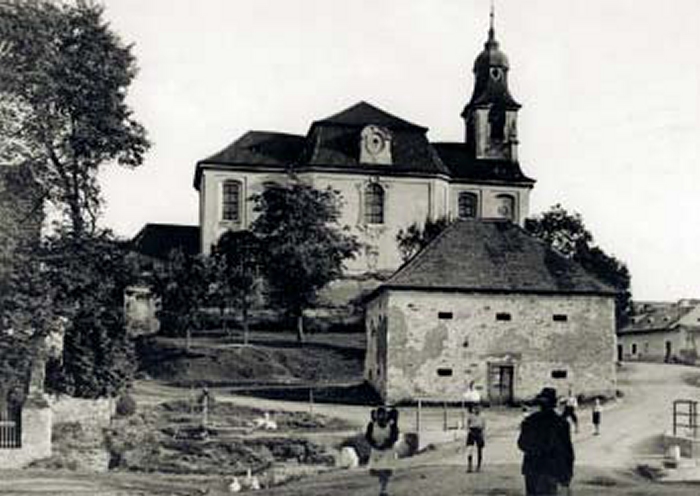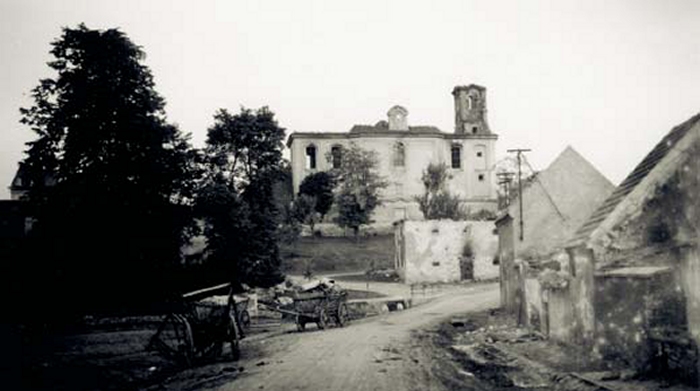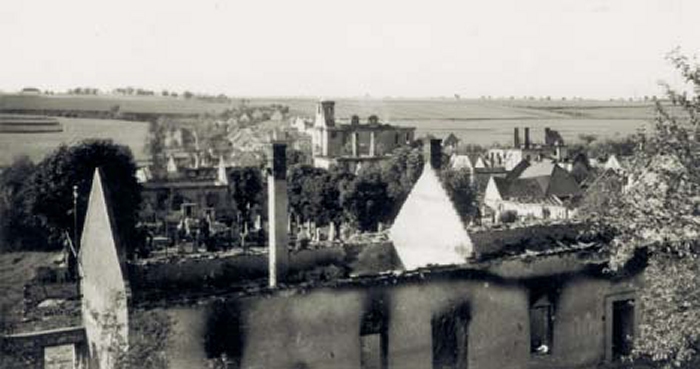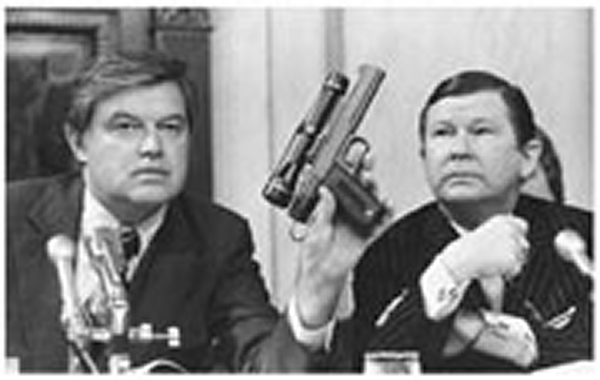![]()
The Charlotte News
Thursday, June 11, 1942
FOUR EDITORIALS
![]()
![]()
Site Ed. Note: World War II Press Officer Doral Chenoweth recounts the story of Raymond Clapper in --30--, which relates the stories of 54, the ten percent who were killed in action out of the 500 accredited war correspondents assigned at one time or another officially to cover the scene of battle in World War II. Mr. Clapper would be killed while covering the invasion of the Marshall Islands in February, 1944 when the bomber in which he was riding collided with another aircraft after it broke formation to provide Mr. Clapper a better view of the results of the bombing raid. In May, 1944, a Liberty Ship would be christened the Raymond Clapper. It survived the war.
A quote from today’s column from Mr. Clapper is included in Mr. Chenoweth’s work, something, oddly, we were led to discover for the first time this morning before looking at today's editorial page, one which features an irregular column of Mr. Clapper, not one of his daily offerings but rather one which had appeared originally in Editor & Publisher, presumably in May.
The piece reviews, with an emphasis on the changes effected in the world by the coming of age of the airplane--now nearly 39 years since the Wright brothers had first flown their bicycle with wings off the winded lift afforded by the sea breeze blown dunes at Kitty Hawk--as witnessed during his round the world visit to Egypt, India, and China, occurring, as he daily recounted it, in mid-March through the first days of April. The journey had led him to an encounter with Jawaharlal Nehru, on the eve of the wedding of his daughter Indira, just as the eventually failed Stafford Cripps mission to bargain for India’s cooperation in the Allied war effort on promise of post-war dominion status was getting under way, as well as to a meeting with Chiang Kai-shek in China on the progress of the war there. Mr. Clapper again writes memorably of his sitting on a crate of airplane propellers with an overcoat slung about him as a blanket while traveling on the military air freight, night express.
For more on the subject of the movingly written piece in the editorial column, "The Savage Walks in Blood", we return you to the report we referenced May 29, prepared under the auspices of the Czech Ministry of Defense, re the Gorilla Hangman of Prague, Reinhard Heydrich, and "Operation Anthropoid", which resulted in his being wounded, then dying June 4, from a bomb thrown May 27 at his Mercedes-Benz as it completed the long U-curve in a suburb of Prague.
The name of the village of which the piece speaks was Lidice, near Kladno. The village had been selected for "reprisal" because of an intercepted letter between lovers which seemed to implicate the writer as being involved in the plot to kill Heydrich; in fact it was simply the author’s ploy to end the relationship, to provide him an excuse suddenly to disappear. The letter was reported to the Gestapo and the writer and the recipient were arrested and interrogatred; later, in September, both were executed. But at this time in early June, they provided information which led to Lidice, the only connection to the Heydrich killing being that it was the village in which had resided two Czech pilots now flying in British bomber squadron number 311, causing the Gestapo to infer that the village was somehow connected to the resistance movement and thus the killing.
On the night of June 9, the Gestapo surrounded Lidice and arrested its 483 inhabitants, setting fire to all the houses of the village. The 173 men present at the time in the village were transported to the farm of one of the absent Czech pilots, and there, in the early morning hours of June 10, five and ten at a time, were executed by firing squad. Nine men and two boys who lived in the village but happened to be at work during the night were subsequently arrested and executed in Prague. Among the last of the murdered men was the 73-year old village priest who had administered to each of the others the last rites. The women and children were transported to Kladno. The women were taken to Ravensbrück concentration camp on June 13 where eventually 53 of them died. Eighty-two of the 104 children of Lidice were murdered with exhaust fumes at a concentration camp in Chemno on Ner. Seventeen eventually were allowed to return to Lidice—orphans to a burned out village they once knew as their home.
Imagine it to be your town, your neighbor, your friend, maybe your enemy, but nevertheless a person undeserving of routinized, officially sanctioned murder for the acts of others against a murderous, bloodthirsty beast who had, himself, with his Fuehrer’s imprimatur and heavy hand upon his unresistant shoulder, approved the systematic murder and displacement of the remaining eleven million Jews estimated still to be in both occupied and unoccupied Europe in early 1942, already of course, in less systemized fashion, having been undergoing displacement, torture, and extermination within Germany and, subsequently, occupied countries, since the beginning of the Nazi terror in 1933.
If you know one of the misguided refugees from reality who have somehow managed to displace in their mind the reality of history itself, and along with it express disbelief in the reality of the Holocaust—as apparently had for many decades, if not most of his life, the individual who, at age 88, despite having fought for the Allies in World War II, took a Winchester rifle of the wild west variety, donned a C.S.A. army hat of some description, and strolled into the Holocaust Museum in Washington yesterday and started shooting up the place, fatally striking a security guard at the entrance, 28 years after he had taken a gun into the Federal Reserve Building with apparent intent to shoot some or all of its Board of Governors, having served seven years in prison for that offense—, then show them The News of this period of history. Show them the photographs of Margaret Bourke-White and others of the day who walked into the camps after the liberation and surrender of Germany. Show them the report of the Czech massacre at Lidice in 1942, its accompanying photographs of murdered men beside which are standing Nazi officers. Show them the heaps of skulls not seen since Tamerlane and Genghis strode mercilessly upon the earth, as Cash had darkly but accurately predicted it would come to be when he sat down to write of its beginning on that fateful morning of September 1, 1939, the beginning of the quest for lebensraum, the Nazi equivalent of Manifest Destiny, but with the added twist of barbarism being its most evident more by which this psychopathic society sought to achieve it.
Too much being made of six million persons murdered ruthlessly, systematically, by dint of only one factor in their bloodlines, or perhaps, merely, in some cases, for being bold enough to speak out, to publish truth, to set human conscience in sway against such indignities to the human race, of such debasement of humanity to that of a pack of blood-lusting wolves? Six million memories and the associations of those who knew them who survived or got out before emigration was stopped on All Hallows’ Eve, 1941 or had already emigrated to America or elsewhere before it all began, forever broken asunder in this life—too much made of that?
Below are three photographs of Lidice, the first taken before the destruction of the town by the Gestapo, the latter two in these June days of 1942 in the aftermath of its burning. The first two are of the same location.



We have already discussed Chaplinsky v. New Hampshire, 315 US 568, decided March 9, the Jehovah’s Witnesses case referenced in "Risky Business for Us All". The editorial suggests it as setting forth a bad precedent, appearing to allow the limitation of freedom of speech by restrictive legislation on time, place, and manner of its exercise when governmental interests in its regulation are shown by the government to be so compelling as to outweigh the individual’s interest in free exercise of the fundamental right. But what, asks the editorial, of the corrupt legal authority which fixes it a crime to speak out on this or that issue inimical to its corruption, then seeking to justify it on the premise of a compelling state interest?
In Chaplinsky, the defendant was convicted in state court of uttering an "offensive, derisive, or annoying word" in a public place by calling a law enforcement officer a "damn racketeer" and a "damn fascist" as he was being escorted away from a mob forming in response to Mr. Chaplinsky’s handing out of leaflets while verbally stating that all religions are rackets. The Court held that the statute was not unconstitutionally vague in that context as it was narrowly circumscribed to embrace behavior subject to government regulation, regulation which it determined did not infringe freedom of speech in this instance. The Court essentially found that the government interest in regulating such speech outweighed the right to utter "fighting words" in a public place, finding that these words so qualified.
As we have discussed previously in the note accompanying the editorials and front page of April 14, however, by the 1960’s the Court would take the side of the editorial, wisely, and begin holding such narrow-minded and repressive statutes unconstitutionally vague and overbroad. For such statutes, usually used to harass unpopular causes and individuals, of course, do infringe freedom of expression. Nevertheless, Chaplinsky has only been consistently distinguished and never actually overruled; its precedential authority, however, has been so eviscerated at this point as to be relegated to the dusty shelves of history, not to see the light again—that is unless we decide as a culture and society to find out what happened at Linz, to find out how it led to Lidice, how these very notions gave rise indeed to fascism in Italy and Nazism in Germany. The first thing they did was to restrict speech and the press, or make it so uncomfortable to speak freely that no one dared speak much at all, except to praise the Fuehrer and his hounds of Hecate, lest they were to risk the taut end beneath the gallows instructed by the Hangman.
Justice Murphy, normally a civil libertarian of the highest order, was plainly on the wrong side of this one when he delivered the opinion for the Court. In all likelihood, this decision was, like Korematsu in 1944, approving the internment of the Japanese citizens on the West Coast, a decision from which Justice Murphy bitterly dissented, an unfortunate product of its time in the country’s history.
And, Howard Whitman, in a piece culled from Coronet, a popular magazine of the time, writes of the prophesying nature of a comic strip known as "Terry and the Pirates", by Milton Caniff--who is better known to the post-war generation of comics aficionados, among whom, as we have said, we do not count ourselves, as the drawer of the "Steve Canyon" strip. In any event, Mr. Caniff managed to predict the use of amplified sounds of war to magnify the presence of a force of arms a day before the tactic was actually employed in the Russo-German war. He had begun discussing the Japanese menace as soon as the war in China began in 1937.
Well, we stress this piece because, as we know, life sometimes imitates art as well the reverse. We pointed out to you last summer the curious portending nature of that "Superman" strip from July 19, 1941 which portrayed a weapon, used by the bad guys, which resembles mysteriously that gun, as employed by the CIA, with the telescopic sight, the one which shot a toxin-tipped dart up to 250 feet, as revealed in hearings before the Church Committee of the Senate in September, 1975 during testimony by then CIA Director William Colby. Mr. Colby had succeeded Richard Helms as Director in 1973. Mr. Helms, subsequently convicted of perjury for his congressional testimony regarding covert operations, had led the agency since 1966. He had served in the OSS during World War II, joined the CIA at its creation and rose to be Deputy Director for Plans, which oversaw covert operations, assuming that position February 17, 1962, serving until April 28, 1965. His predecessor in that post since 1959 had been Richard Bissell.
If you find striking the coincidence of the "Superman" comic appearing on July 19, 1941--eight days after "Wild Bill" Donovan became the first Coordinator of Information, the agency which preceded the formation of the OSS, of which then Colonel Donovan was appointed Director, formed at this very time in history, by pure coincidence, on June 13, 1942, a Saturday—then you are not alone.
Last night, a night after we re-read the short story by Ambrose Bierce, we watched again the French film version of "An Occurrence at Owl Creek Bridge", winner of a Cannes Film Festival award in 1962. In doing so, and thinking about it again in its context as we originally saw it as a special presentation of "The Twilight Zone" one Friday night in February, 1964, we ran across a couple of comments someone had posted about the film. One comment said something to the effect that the ending was "halarious", that following another comment by someone else to the effect that the character in the story got what he deserved at the end, hanging, for having been a Confederate sympathizer--apparently, though the story itself does not fill out for you this part, any more than the film attempts to do, having been caught attempting to set fire to the Owl Creek Bridge.
We paused on those comments because they fundamentally misunderstand, in our estimate, both the point and power of this story of the Civil War. The story is meant to be ambiguous, universal, not partisan. The story is one of humanity, not North versus South, not Yankee versus Confederate. The character is represented as a wealthy planter owning slaves. A Federal scout, unannounced as such, happens upon his land and stops for a drink of water, strikes the casual conversation telling him of the vulnerable Owl Creek Bridge, leading ultimately to the planter’s hanging for attempted sabotage. What occurred in between, we don’t know. Was it Yankee cruelty? Was it sabotage by a civilian against the invader to his country? Was it attempted sabotage against a bridge properly guarded by government sentries against rebel activity in a land gone berserk to try to protect a corrupt system of bondage of fellow human beings in involuntary servitude? The story does not say. The story does not discuss slavery, the plantation system or the South or the North and the complexities of that war through which the author lived, serving as he did in the Federal Army, fighting at the terrible Battle of Shiloh in Tennessee in the spring of 1862—where the Owl Creek is located.
We merely mention it. It is best not to confuse too much fiction and reality, as if the two were the same thing. Fiction may be written about reality and real experience, but it is not a vehicle for determining the past as reality, rather instead for understanding sometimes the past as a reality, bearing in mind always the viewpoint of the author and the author’s intent in relating a story the way he or she sets it down. "An Occurrence at Owl Creek Bridge", while set in the Civil War, is, we posit, more a story about humanity and the complexities and commonality of human experience than it is one of war.
When, as a child, we first saw it, we wondered at it. We understood it as a dream within a dream, as it is. We understand it better today than we did then, having learned a good deal more of its context.
We challenge you to find out what was the time, in the 1962 French film version, when the hanging took place.

Was the editorial on the massacre at Lidice correct in asserting that for every head chosen for the Hangman by the Gestapo, there should be paid German heads five-score? Mr. Kipling, at least by his poetry, apparently thought it at once a good threat to deter wanton murder.
![]()
![]()